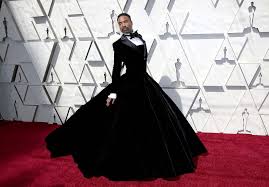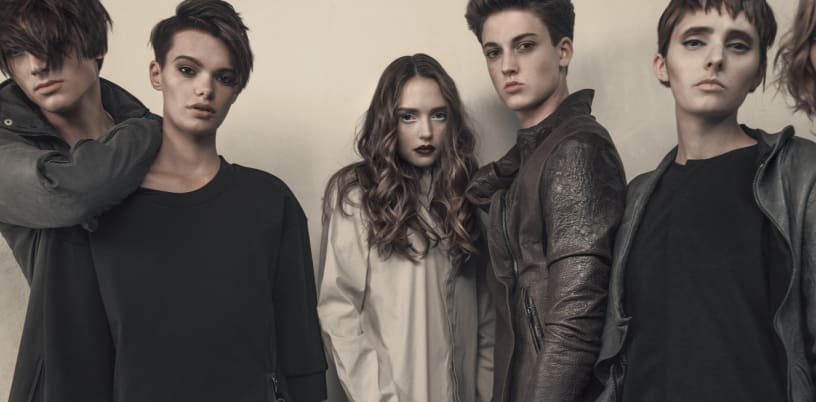Young ladies sport pink. Young men sport blue. Young ladies wear dresses. Young men wear suits. Despite the sum it contradicts for the most part, structure is a various gendered thing. Clearly, when I state ‘various’, what I truly mean is ‘two’.
As brought up by Lisa Wade at Sociological Images, there is only from time to time a decision these days to buy pieces of clothing that are orchestrated as something other than men’s or women’s.

Glancing back at every decade, there are design patterns all through every one of them, yet generally, those patterns have been distinctive for every sex. Take the ’50s for instance. Men wearing formal attire during the week and wore slacks and a pleasant shirt on the ends of the week. Ladies wore dresses and pearls basically consistently, and consistently looked pretty and set up. At that point on the off chance that you see today.
Mainly the distinctions aren’t so clear any longer. In an article by Who What Wear, a style site, about fall/winter patterns for 2018, there are not explicit patterns for people. They are assembled, which shows that there isn’t a similar design generalization as per sexual orientation any longer.
For such a long time, it wasn’t socially worthy for young ladies to wear pants. That appears to be absurd, does it not? The design business and cultural gauges push these standards on us. How can it be that individuals who distinguish as male can’t wear a skirt or a dress?
Some apparel brands have just begun to perceive this blemish and are attempting to address it, for example, Louis Vuitton in 2016. They propelled a garments battle that highlighted Jaden Smith and other ladies demonstrating conventional “women’s” garments, for example, skirts and dresses. Jaden Smith is taking extraordinary steps in the design business by wearing these garments. What’s more, prepare to have your mind blown. He glances stunning in them.

Some attire brands misunderstand the thought too. Zara discharged an “un-gendered” attire line which comprised of plain, hermaphroditic garments: Sweatshirts and pants, dress that everybody as of now wears. This brand just pushed the possibility that with the end goal for sexual orientations to wear something very similar, it can’t be “excessively female” or “excessively manly.” This apparel line got a ton of negative audits since they called it “ungendered.” If they called it “exhausting,” it presumably wouldn’t have gotten awful kickback.
As indicated by Vogue, the design business is really moving towards sexual orientation smoothness, which is something worth being thankful for. Male models on the runway are wearing skirts, frilly shirts, and high heels. This sort of introduction is normalizing individuals wearing anything they desire to wear. In the spring/summer 2018 menswear shows, they sent men down the catwalk increased skirts, imitating the resistance at Exeter’s ISCA Academy. The brand Gucci has been doing likewise, rolling out the improvement towards sexual orientation smoothness. Male models walk wearing long dresses and stout recuperates.
There is likewise an issue with trans individuals who wear garments of their favored sex, yet the garments don’t generally fit accurately. That is the reason a few organizations, for example, Kirrin Finch are making garments that are customarily male fitted more to individuals with hips or bigger chest.
Another issue the style business has with sexual orientation is that design is known to be a “female” calling however it’s despite everything managed by guys. The issue men are granted applause and grants over ladies in the business, in spite of style despite everything being viewed as a female occupation.

Before, ladies weren’t permitted to wear pants or jeans since it was “excessively manly.” Now it’s inadmissible for men to wear generally “women’s” dress. Much the same as how it at last turned into the standard for ladies to wear jeans or skirts, the style business will change enough for it to turn into the standard for men to do likewise. The style business is in reality exceptionally chauvinist, and some of it is simply on mishap in light of the fact that the man centric society is so imbued in our framework that it’s difficult to wander away. The best way to fix this is to discuss it. Ensure individuals know the issue and afterward we will be headed to a more brilliant and equivalent future for people.
The objective of style organizations isn’t to just switch the “jobs” of people, and what they can wear. In that equivalent article, it explains this. “… the present design progressives are not keen on feminizing men or castrating ladies. Style needs to kill those names. This implies design needs to deconstruct sex generalizations with regards to wearing styles. Additionally, this implies the design is meaning to obscure the manly/ladylike separation in view of thought which contends that pieces of clothing have no sex.”
– by Anushka Dwivedi
picture credits-(google images)
References
https://vocal.media/viva/gender-in-the-fashion-industry
Follow Social Media to get Regular updates , Account details :
- Facebook : fashionvaluechain
- Instagram : fashionvaluechain
- Pinterest: fashionvaluechain
- Linkedin : fashionvaluechain
- twitter : fvcmedia

